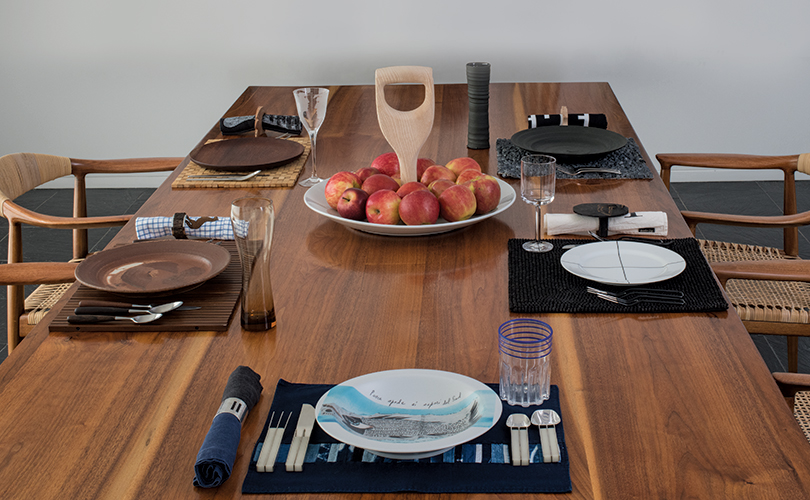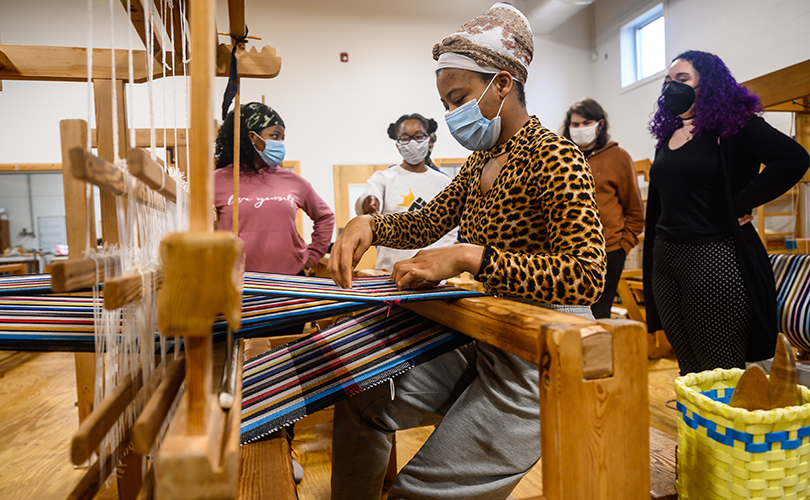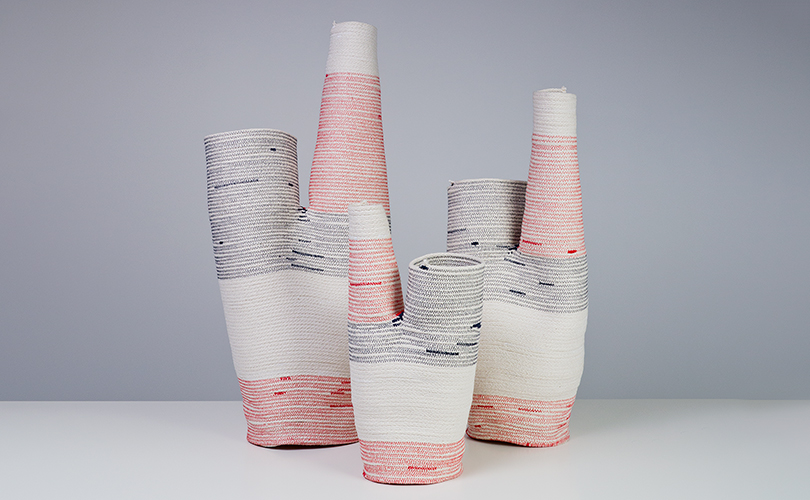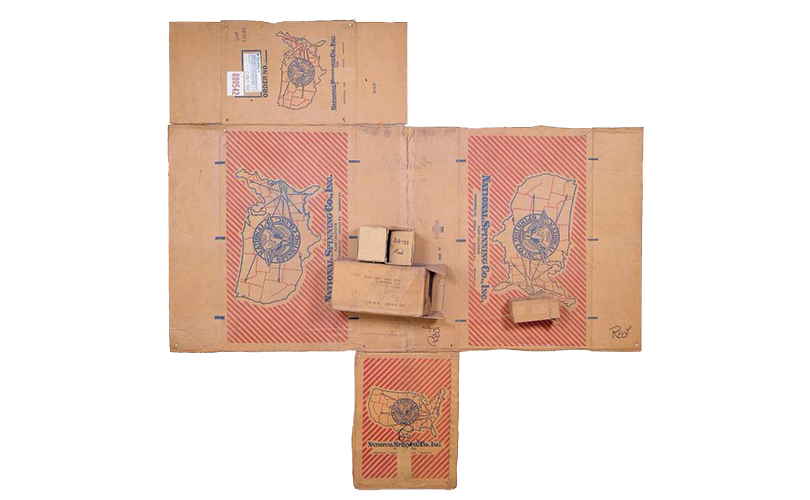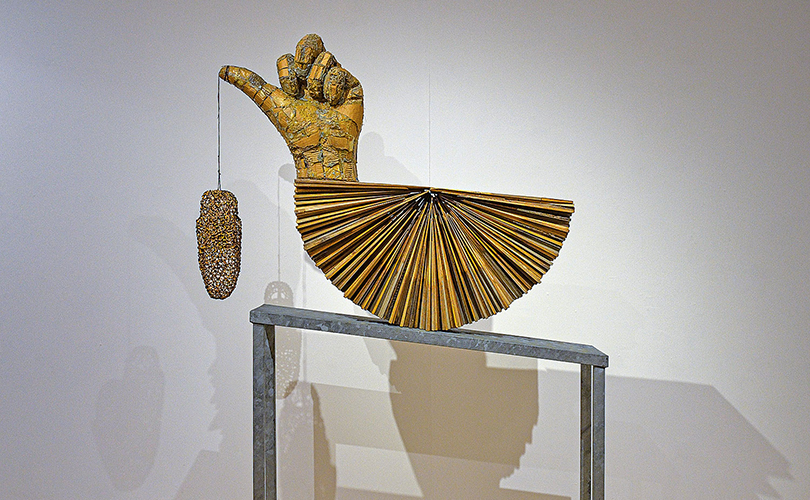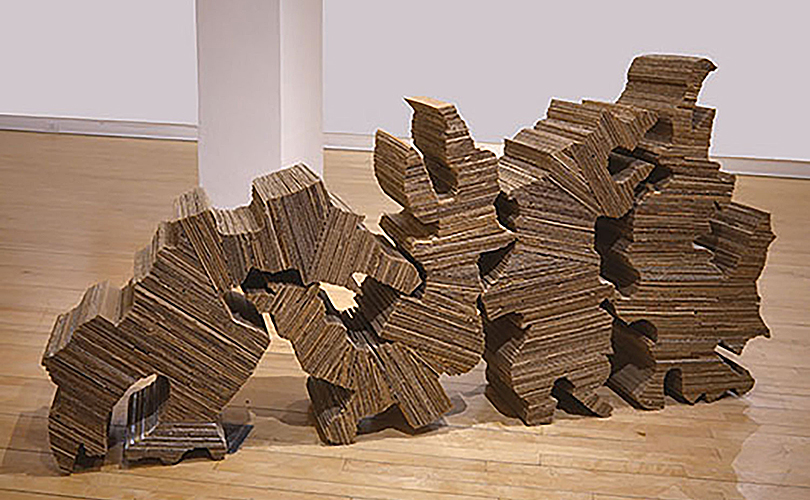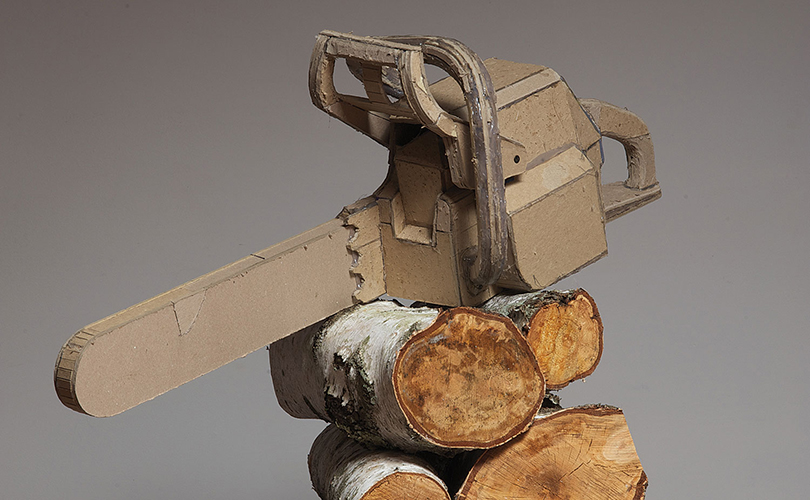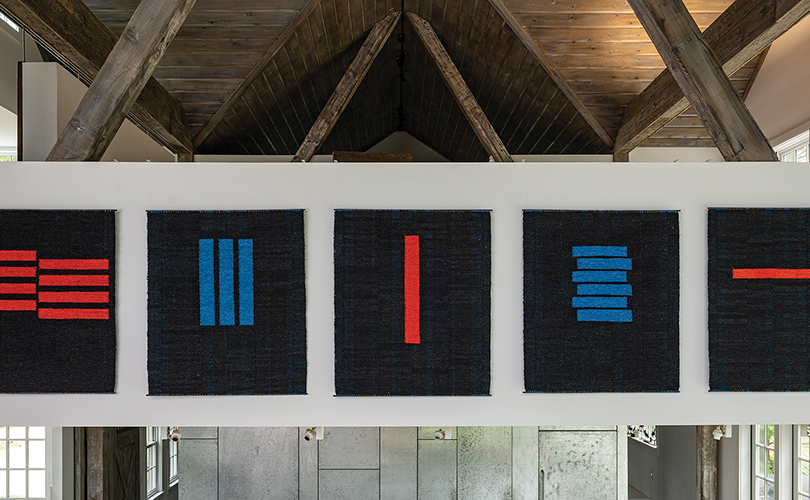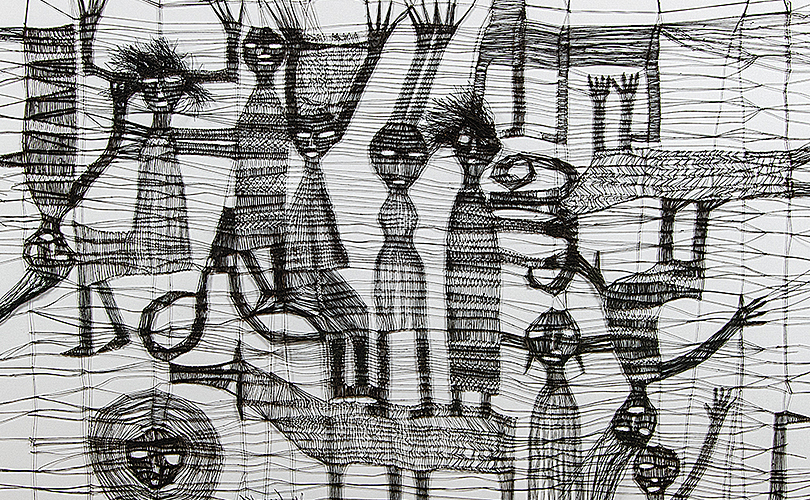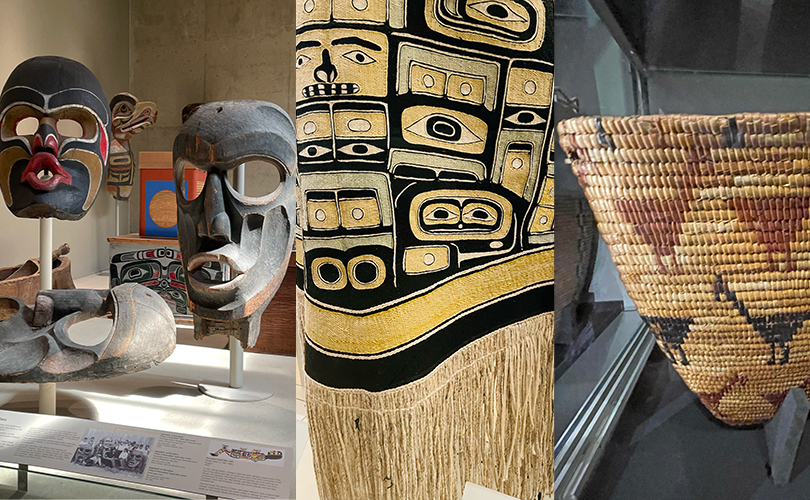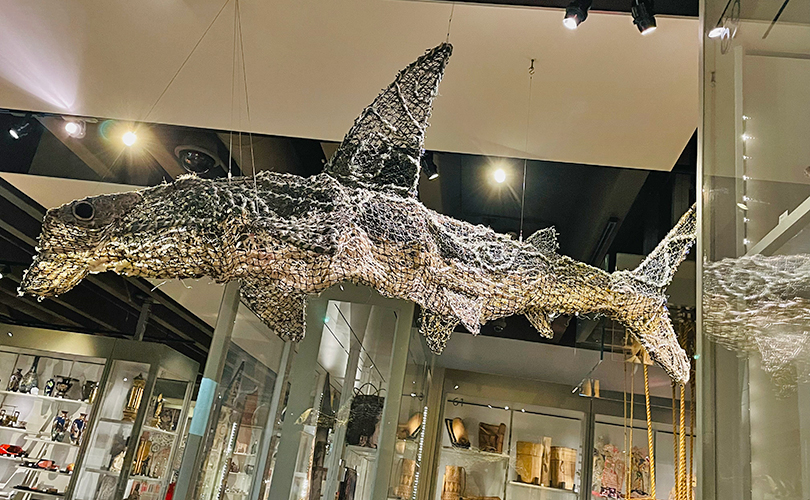There are few things we enjoy more than introducing you all to the brilliant art of the artists we have the honor to work with. This month, we showcased the work of artists: Heidrun Schimmel, Caroline Bartlett, Sue Lawty, Zofia Butrymowicz, and Włodzimierz Cygan. Read on to see what these artists have been busy creating!
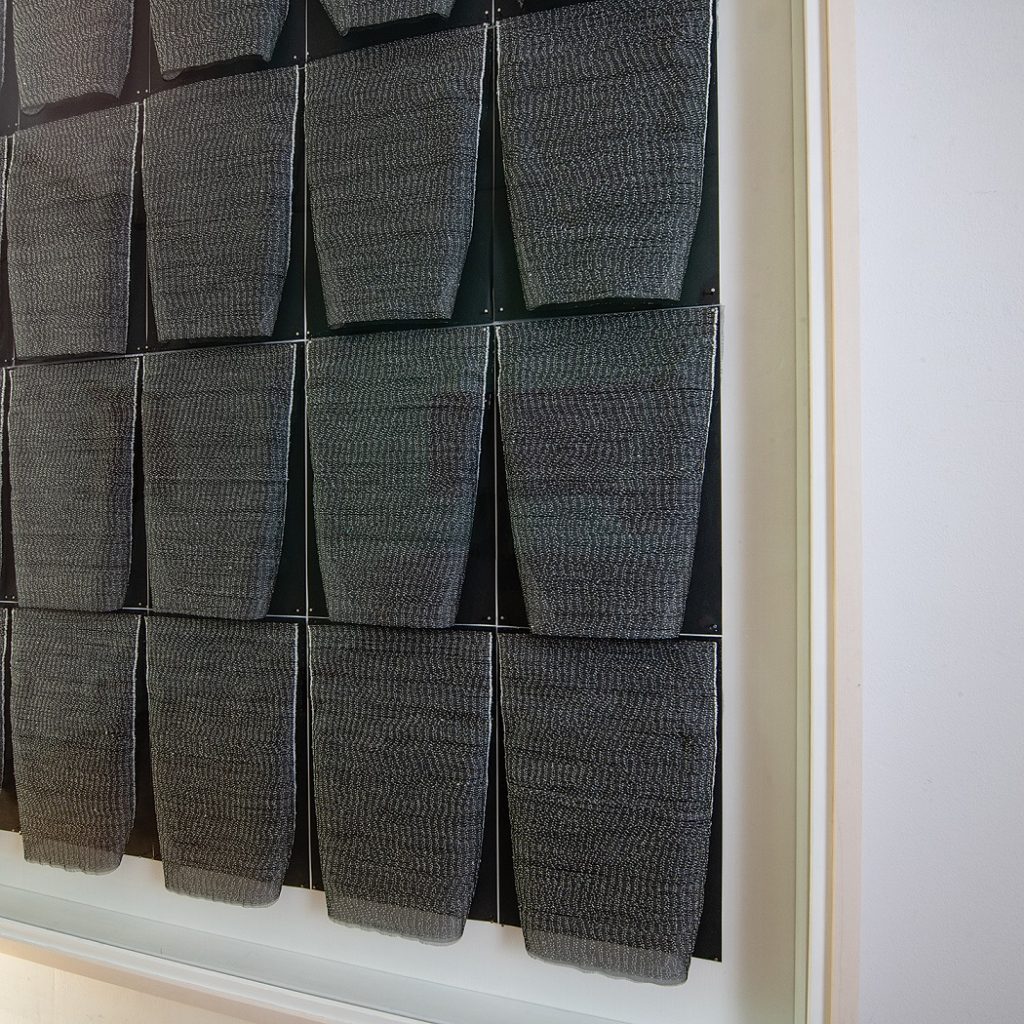
This German artist, Heidrun Schimmel, consistently impresses us with her detailed, handstitched artwork. Her ideas often stem from the soft, unstable and flexible qualities of the textile materials she works with. For the realization of her ideas, she stitches white cotton thread by hand onto transparent silk; which she has noted to be the simplest material and simplest technique: the stitch.
When asked about her process, Schimmel stated:
“Stitching by hand exclusively, I take my ideas from specific qualities of the thread and the stitching process. Behind the Lines of Thread shows the so-called “left side” of the thread lines. The tensions between these thread lines protect the “right side,” which the viewer cannot see. Each piece has its own individual shape and at the same time it enters into a relationship with all the other parts. “
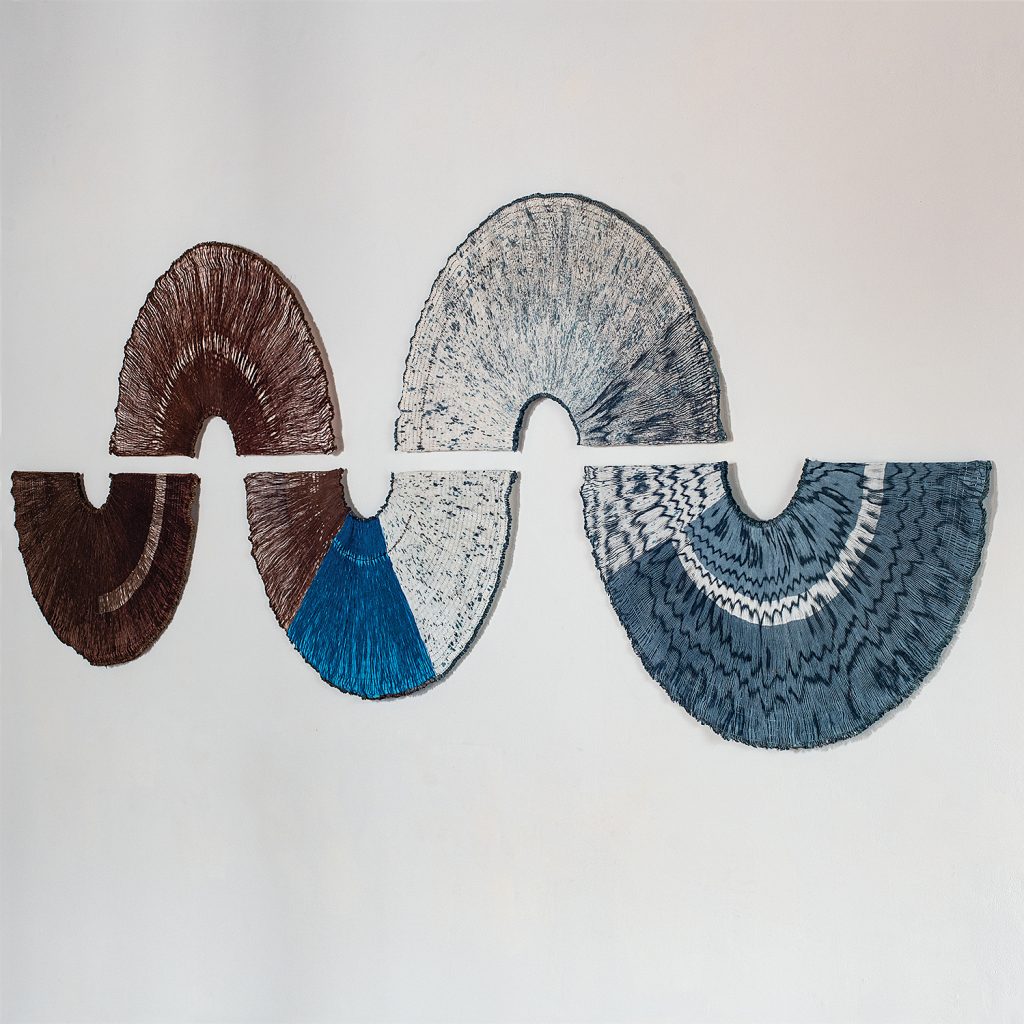
Up next, we have the innovative work of UK textile artist, Caroline Bartlett. With textiles at the core of her practice, Bartlett’s artwork is often created in reference to historical, social and cultural associations. Bartlett’s practice is driven by questions – for example around the tensions between personal recollection and the public ways of remembrance and the potential of materials and objects to trigger recollection and association.
“As age and experience expand, I find myself more aware of how I work,” said Caroline Bartlett. “I continue to actively need fresh challenges while knowing and recognizing limitations of self and the art world in general. Again the push/pull. No room for complacency.”
What a profound lens into her creative practice!
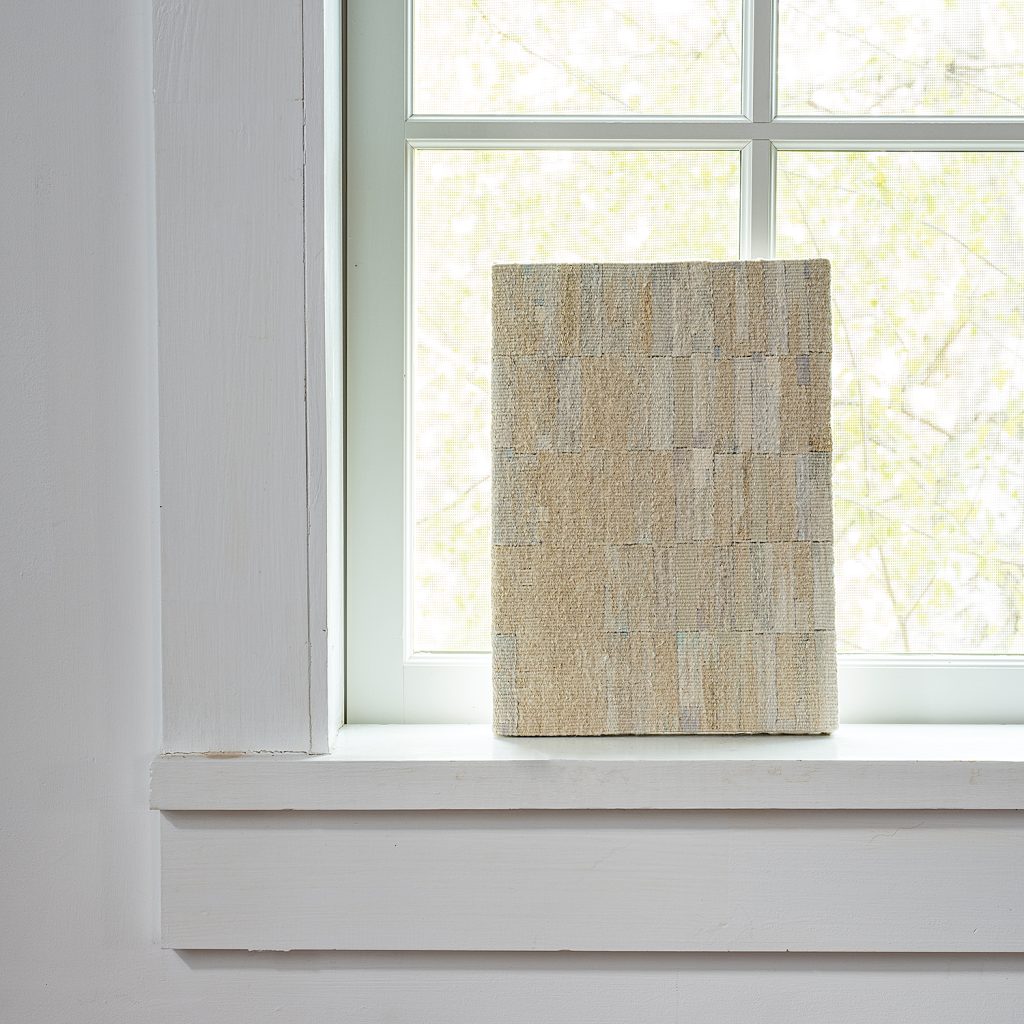
Tacitum II was created by acclaimed artist, Sue Lawty. Lawty is an England-based artist who is widely known for her meticulous exploration of the mediums she works with.
She has charted the journey of her understated and abstract works – stating that they are strongly influenced by a comprehensive engagement with remote landscape, geology and the passage of time.
Lawty’s work is rooted in the emotional, spiritual, and physical engagement with land through construction and repetitive structure, and the inspired creation behind her pieces shows!
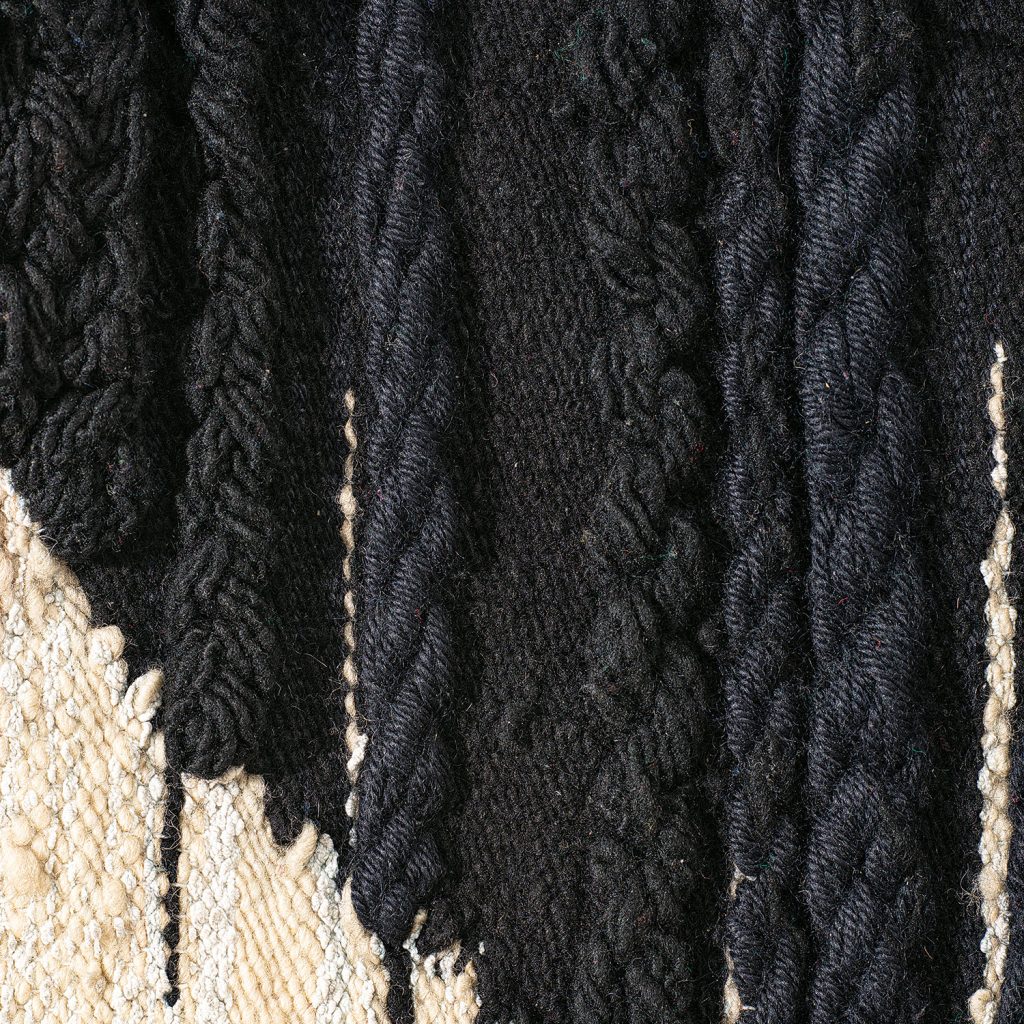
This next piece holds a special place in our hearts as it comes from the late Zofia Butrymowicz. Butrymowicz has been recognized globally for her innovative works in the ‘60s and ‘70s – often using thread she spun herself in Poland during the post-war period when supplies were in a great shortage.
This work is made from wool sourced from Canadian artist, Mariette Rousseau-Vermette. Back in 1969, Butrymowicz visited Canadian weaver, Mariette Rousseau-Vermette and her husband, painter and ceramicist, Claude Vermette, outside Montreal where the couple lived and worked. Zofia stayed with the Vermettes for several months, using Mariette’s looms to create tapestries that were displayed with Claude’s ceramics at a local gallery.
To create this piece, Zofia “painted” the weavings made from Canadian wool with colors and shadings of yarns, including only a shimmering suggestion of a shape, often a circle, as she had done in other tapestries, but the glisten and sumptuousness of the yarn from Rousseau-Vermette used in this particular piece sets it apart from her other works.

Last, but not least, we highlighte the work of Włodzimierz Cygan. Cygan is known globally for his textile innovations. Growing up, Cygan lived in a city in Poland called Łódź, which has very strong textile traditions that inspired him to create the works of art you see today.
“When trying to determine why the means of artistic expression in tapestry was becoming archaic,” said Cygan, “I realized that one of the reasons might have to do with the custom of treating the threads of the weft as the chief medium of the visual message. . . . These observations led me to wonder how the artistic language of textiles might benefit from a warp whose strands would not be parallel and flat but convergent, curved or three dimensional ….”
As a result of these explorations, in some of Cygan’s works, the warp changes direction, enabling the weaving of circles or arcs.
We hope you enjoyed learning about these prominent contemporary artist.s If you like what we have highlighted this month, keep your eye out for more – we keep them coming every week.
In the meantime, mark your calendar for our upcoming Art in the Barn event, Allies for Art: Work from NATO-related countries (October 8-16, 2022), it’s an event you won’t want to miss! Click here for more information and to reserve your spot.

